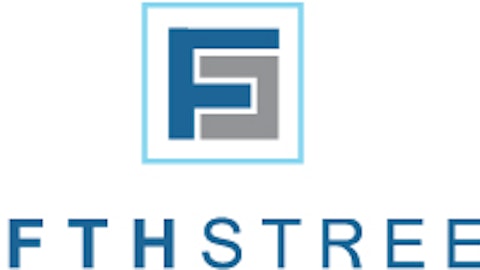We have longed recognized that ICE 2, as the point of interface between Foundation Medicine and our users on a technology front, maybe the perfect place to collect that outcomes information and learn how positions and users are using Foundation Medicine’s information to care for their patients. It is also potentially the perfect opportunity for us to share information with those users about how other patients have been treated and how they have done specifically regarding off-table targeted therapies to allow them to make the most informed clinical decisions.
With these two principles in mind, we have developed PatientMatch. This new feature that allows Foundation Medicine users to access these outcomes data. PatientMatch leverages Foundation Medicine’s genomic database of now more than 27, 000 genomic profile to identify other patients similar to theirs, based on not only tumor type but also specific genomic profiles and alterations. We allowed these physicians to request the experience of these other Foundation Medicine users with a simple, structured response format. We are able to then store these responses in an outcomes database we use not only in PatientMatch but in all of our molecular information effort.
To take a hypothetical scenario to walk through PatientMatch, let us imagine the case of Dr. Cole, an oncologist who has ordered Foundation Medicine’s Foundation One test for a patient of hers with breast cancer. Foundation Onereport comes back with a finding of an EGFR L858R alteration. An alteration she is unfamiliar within that tumor type. PatientMatch tells her that there are, in fact, several other patients who we have seen in our database with similar genomic profile. PatientMatch then reaches out to those physicians who care for those patients on Dr. Cole’s behalf, one of whom is Dr. Miller.
Dr. Miller receives Dr. Cole’s request in his own email box and agrees to help her. He clicks on that email which takes him directly into Foundation ICE, chose him his matching patient and asks him four simple questions about his experience treating his matching patient. Dr. Miller’s response is then stored in an outcomes database, to be sent not only to Dr. Cole but saved to other physicians who have similar inquiries in the future and saved for other molecular information efforts at Foundation Medicine.
At 72 hours, after responses have been collected, Dr. Cole receives an email from PatientMatch informing her that her responsesare ready. Then clicking to that email, she is taking the Foundation ICE to her patient’s report now with the PatientMatch report attached that includes all of the information about how other physicians treated similar patients. It is important here to note that this is a natural extension of all physicians already due today. Physicians already are used to contacting their colleagues in consultation for care of complex or difficult patients.
Here, we have extended that model to a technological era so physicians can contact other physicians through an interface like ICE 2. Moreover, we have extended this content into the molecular era, where it’s not sufficient to just contact a colleague or specialist in a particular domain, but to actually contact the specialist who has seen a patient with a similar genomic profile. Our interface, PatientMatch, allows the physician to do that no matter where that physician or patient is located.
I would like to spend the next few minutes and actually walk you through a demo of how all of these features work.
This is the landing page of the work list where a physician or another Foundation Medicine user, be it a nurse practitioner, a nurse, an administrator, or researcher can interact with their entire work list of patients.





